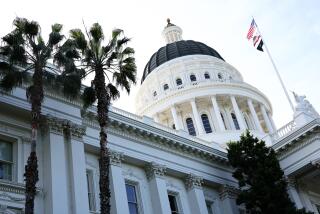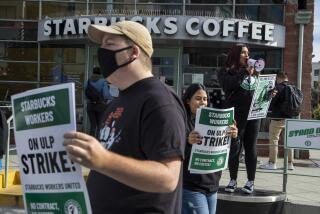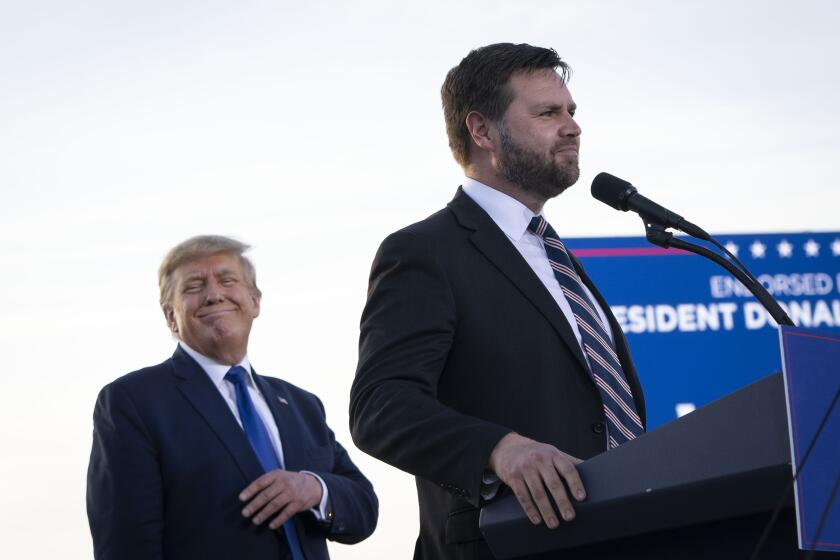A route around a BART strike
Gov. Jerry Brown, his investigative panel and a San Francisco Superior Court judge appear to be of one mind: A renewed strike against the Bay Area Rapid Transit District would jeopardize and harm the publicâs health, safety and welfare. Thus, the court ordered a 60-day injunction against a strike, as provided for by California labor law, until midnight Oct. 10.
In most public transit labor disputes, unless binding arbitration is substituted for the injunction, state intervention is unlikely to solve the deeper problems and may only put off an eventual work stoppage. The BART dispute offers a good example why.
Though negotiated settlements have followed temporary transit injunctions involving BART, the current talks, so filled with rancor and gaping differences between the parties, may mirror the one in 1997, when a six-day stoppage occurred after a 60-day injunction expired. The prospects for peace in these circumstances are not good.
In the first place, the parties appear to remain far apart on all issues, particularly the critical ones involving wages, pensions and healthcare. The rhetoric, frequently engaged in publicly in defiance of a mediatorâs gag order, has been acrimonious. And beyond the cooling-off objective inherent in the 60-day injunction, there is no incentive in this process to settle differences. Indeed, in these circumstances, the dispute often heats up rather than cools off. And, equally important, the injunction places all the burdens on labor and none on management.
If the BART dispute lingers on, it is possible that public opinion, already hostile to the unions, could push for an irrational solution through the stateâs frequently irrational initiative process. This avenue could take the form of a call for strike prohibitions, for example. Such a response would be seen by many as appropriate given the unacceptability of transit strikes, which can affect public safety because the ensuing traffic congestion could disrupt response times of ambulances, firetrucks and police cars, as well as peopleâs ability to get to work. But such a course of action is incomplete and wrongheaded.
Just prohibiting strikes could simply foster union defiance. This approach also would be one-sided and undemocratic. The sine qua non for a legal remedy in such strikes must be final and binding arbitration along with the strike prohibition. The Legislature should enact both principles in a new law and displace the injunction as a stand-alone remedy.
This kind of resolution should not be of the Solomonic variety in which the arbitrator can split the difference, thus encouraging each side to adopt uncompromising and rigid stands, as weâve seen in the current situation. The new law should, instead, provide for what is known as âfinal offerâ arbitration, in which the arbitrator is obliged to select one or the other sideâs final position. This is a process first adopted by Major League Baseball â a sport in which there is a winner and a loser and no tie games â in its 1973 salary disputes. This process generally induces each side to be more reasonable in the hope that its final position will be the one selected. As parties come closer together, the prospects for voluntary settlements increase and the arbitrator may be able to don a mediatorâs hat in assisting the parties in reaching an agreement.
Sometimes, though, the parties simply cannot get together and a binding final offer decision becomes necessary. While the 60 days provided by the court in this case may not get the parties to an agreement, they should give the political process time to work. But the governor and the Legislature must act immediately to devise this kind of legislative approach so that the BART dispute, as well as future ones, has a better chance of effective resolution. Both will be reluctant to act, but they should realize that the alternative is the possibility of an initiative that could displace their legitimate role in governing and disrupt labor-management relations. Final offer arbitration is a better incentive for dispute resolution than a one-sided injunction.
William B. Gould IV, chairman of the National Labor Relations Board in the Clinton administration and professor emeritus at Stanford Law School, is the author of the just-published âA Primer on American Labor Law.â
More to Read
A cure for the common opinion
Get thought-provoking perspectives with our weekly newsletter.
You may occasionally receive promotional content from the Los Angeles Times.










